Savings on printing documents: turnkey solutions
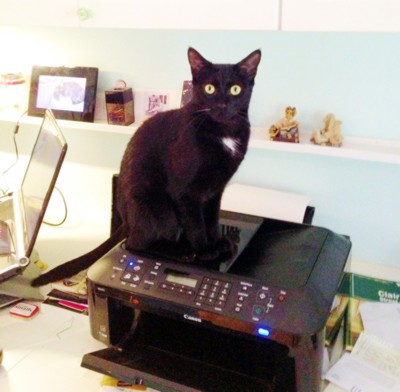 Not so long ago, we spoke at the CNews “ IT Strategy 2015 ” conference. As usual, the topics of optimization and economy were at the forefront. Because IT companies are not only beautiful offices and interesting work, but sometimes not all noticed, but tangible expenses for some things. Like the same print.
Not so long ago, we spoke at the CNews “ IT Strategy 2015 ” conference. As usual, the topics of optimization and economy were at the forefront. Because IT companies are not only beautiful offices and interesting work, but sometimes not all noticed, but tangible expenses for some things. Like the same print.In the course of her speech, our speaker voiced the thesis that, according to which, in the IT budget, the obvious printing costs can range from 250,000 rubles per month. Immediately a voice came from the hall, where, they say, we met such small printing costs. It is quite possible that such numbers will cause bewilderment not only among the conference participants, but also among many IT budget managers. Therefore, we decided to calculate how much money in the budget can be saved from multi-million printing costs, if we correctly optimize these processes. And at the same time to consider the factors affecting the cost of printing documents.
If it also seems to you that the printers in your organization began to cheer up such sums, that during the year you could postpone both the expansion of the office and extraordinary employee bonuses, and the technician who serves your printer fleet wondered whether you should buy the Audi Q7 now or wait. which is more interesting - most likely, our research will be interesting to you.
Oh gods, what expenses!
We decided to consolidate and standardize both the companies and the processes themselves. In general, printing as such is largely similar (laser, inkjet, matrix printing devices), but the volume of printing in different companies (and areas of activity) may differ significantly. General trends in print volumes can be identified by generally accepted industries, for example: manufacturing, retail, insurance or the banking sector, government agencies ... Based on our rather rich experience, we can say that when building a fleet of printing devices, you must first focus on print volume. Therefore, for example, we took monochrome laser printing as the most frequently used in those companies, which will be discussed further.
')
Another introduction: there are many factors that can be considered as an additional error (2-5%) in the calculations. So, we had the experience when the increased humidity of the air made serious adjustments to the cost of repairing printers, as well as the crazy hands of users. Therefore, all calculations were made for “ideal greenhouse conditions”, without adjustments for inexperienced users, deviations from temperature and climatic norms, increased dustiness, humidity, radiation, and so on. Of course, the new secretary, who sees the working printer for the first time and bravely tries to handle it on her own, can significantly "correct" all the research figures. Fortunately, this is more the exception than the norm.
So, below we will look at five typical examples of the organization of printing with a volume of about 1 million copies per month (the level of print volume of leaders in each industry).
In this review, we do not consider refueling and the use of compatible cartridges, since their main drawback is the instability of the resource and quality, which is unacceptable for large print volumes and entails significant additional costs, which are practically not amenable to analysis.
To begin with - print cost charts:

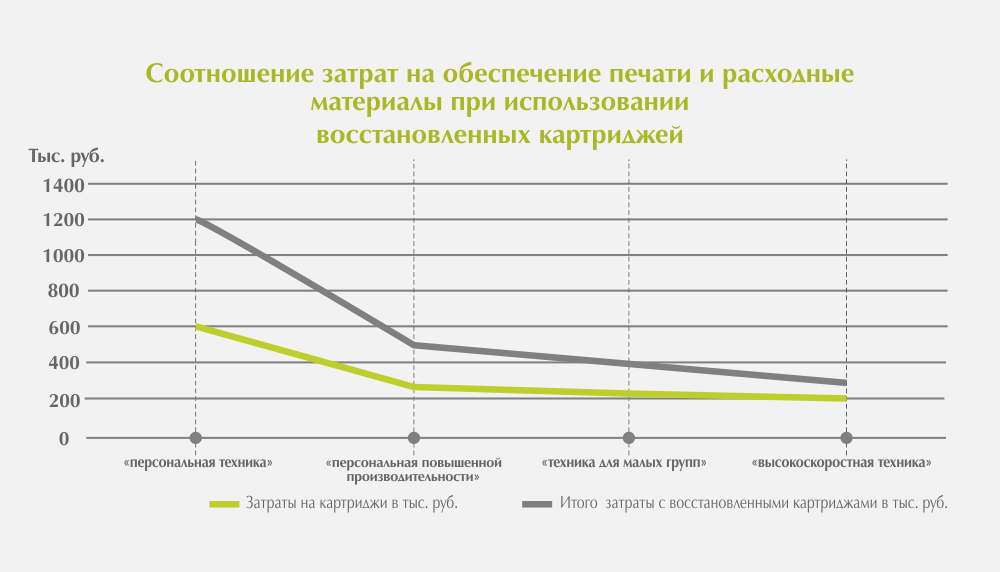

About printers
The above graphs of the cost of printing, depending on the maximum performance of the printing device. We deliberately took the latest HP device models. Why are you choosing HP? Surely you already have doubts that the research has been generously paid for, and the conclusion will be “If you want to save, buy HP!”. We hurry to disappoint you - everything is simpler and more prosaic. The fact is that at the moment Hewlett-Packard in Russia is the most popular brand of printing devices (they are also the best-selling models in their classes, except for the public sector), breaks down according to the same statistics very rarely, HP consumables are perfectly “sharpened” for reuse (recovery) - with the right approach, they must be reused at least 6-8 times.
The calculations in the tables are based on 4 models of HP printers of different classes, each of which is focused on a particular application. They have a lot in common: they all print on A4 paper (except the M806dn, which can print on A3), support duplex printing, and also have an LCD display and an Ethernet connector for connection. A little more detail:
HP LaserJet Pro M225rdn - MFP for home and small office, with print speeds up to 25 A4 pages per minute. From the nice little things - auto-filing documents when scanning. The current price of the printer - from 14 000 rubles.
HP LaserJet Enterprise 600 M601dn - MFP for large office with print speeds of up to 43 pages per minute. The current price of the printer - from 31 000 rubles.
The HP LaserJet Enterprise 600 M603dn is the older brother of the previous model, but designed for more print flow — at up to 60 pages per minute. At the time of this writing, the price starts from 57 000 rubles.
The HP LaserJet Enterprise M806dn is a high-speed printing device with a CF325X cartridge (No. 25X). Prints at speeds up to 56 sheets per minute, and the maximum print format is A3. At the time of this writing - from 176 000 rubles.

Prices for printers used in the calculations were taken on February 1, 2015. Due to currency fluctuations, they may differ from current prices. Anyway, the exact cost of the printer does not have a significant impact on the level of costs for printing documents.
Well, once again we recall that all calculations were made for "ideal conditions", that is, with the preferences you have, you can always change the HP to Kyocera, Samsung, and so on, but the amount will not change much because of the change of these terms, the principle of optimization will remain.
Option 1: "Ideal"

Ideally , this is when 5-10 (the smaller, the cheaper) high-speed printers like HP LaserJet Enterprise 800 Printer M806dn with a CF325X cartridge (No. 25X). They are placed in the common areas, and printing for employees can be arranged using cards for ordering. Examples of ideal options are large offices of companies, central offices of banks, the Central Election Commission at the time of elections, the main offices of oil and gas companies.

This approach has its pros and cons.
Pros: minimum unauthorized printing, the minimum cost per print, high fault tolerance with the correct choice of provider for the supply of maintenance and cartridges.
Cons: to get a package of documents sent for printing, it is necessary to overcome sometimes a considerable way, and this is a waste of time; sometimes there is a queue of employees. It is necessary to estimate the cost of the loss of this time, but few people think about it (and this should be done - the cost of working hours of specialists in recent years has increased significantly).
Option 2: "Optimal"
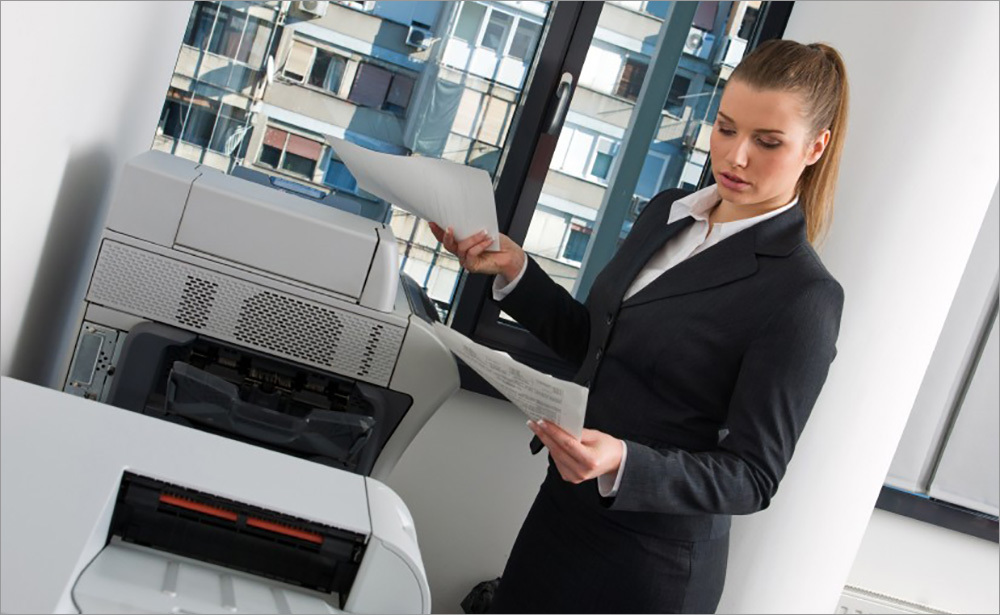
The best option is when there are 200-300 users, some of the key employees have personal printers installed on their desktops — they print a little, but printing should always be at hand. You can fight this and convince that it is expensive, but it is easier to forgive them for these quirks (for example, to the financial director or chief accountant), and it is not that expensive considering how expensive their working time is. Moreover, the CF283X-type cartridge (No. 83X) is usually enough for 3-6 months :) As an example, the main offices of city banks, the election commission somewhere in Rostov-on-Don, regional offices of large companies.

The second group of users is grouped into small groups of 2-3 people, printing in 2-5 steps. This group is already more economical, but still very costly. But, again, the convenience is worth it, especially if employees spend no more than one cartridge like CE390A (resource ~ 10,000 pages) per month.
The third group prints quite a lot and, as a rule, whole packages of documents. There are few such groups and it is better for them to deliver workhorses, such as the HP LaserJet Enterprise 600 M603DN with duplex printing. You can add receiving trays, etc. If the user makes a dozen steps to the device 2 times a day, then there will be nothing terrible about it, but the savings are already noticeable.
The fourth group of printers such as HP LaserJet Enterprise 800 Printer M806dn is designed for large print flows (warehouses, shipments, accounting, or client room). The minimum price of a copy is of great importance here, and the choice of such a trotter must be approached very carefully, every penny in the price of a copy is of key importance, and it is important to take into account all the obvious and hidden costs.
3 option: "Retail"

Separately, we will dwell on network retail: chain stores, mobile shops, bank offices, pharmacies, etc. Here the key factor is the amount of printing at each point . If it does not exceed 1000 copies per month, then devices like HP LaserJet Pro M225rdn will do. But in any retail there are checkpoints where the print volume is 2, or even 3 times more. Therefore, for such places it is better to put the HP LaserJet Enterprise 600 M601DN, with which the price of a copy will drop significantly.

In the head office and in the field of mass printing, the HP LaserJet Enterprise 600 M603DN and HP LaserJet Enterprise 800 Printer M806dn machines should be positioned correctly. In general, the cost of printing will be higher than optimal, but in another way the task of printing is unlikely to be solved here.
4 Option: "Public Sector"

The situation is worse in the public sector (sadly, but the statistics are implacable) - in numerous committees, administrations, PMUs, pension funds, etc. There is a printer on each table, it is constantly bombing, it is difficult to replace it with another one, and the user is used to it. And it's not easy to write it off. Therefore, it is expensive and angry that it prints and eats at least one cartridge per month - maybe someone is trying to do savings and optimization, spends his working time on it, taxes only grow in the end, but pensions and quality of services are not. In most cases, nobody will be allowed to optimize there, but we are obliged to give such an example.

So, for the public sector: the most popular and most printing technology of the smallest type - HP LaserJet Pro M225rdn. There are sometimes groups of young and progressive employees who are joined together, and this is only because they print a little. HP LaserJet Enterprise 600 M601DN or HP LaserJet Enterprise 600 M603DN was put on the group.
The saddest thing is that in the good times of universal grace, expensive, but beautiful, devices like the HP LaserJet Enterprise 800 Printer M806dn were purchased. They were placed in the pass-through areas, but they are rarely pleased with the work due to their remoteness, because over time, the staff "knocks out" additional printers for one or several users.
In general, this is an example of how not to organize printing. But we are unlikely to change something in the foreseeable future. May the civil servants forgive us, and, thank God, that is not the case everywhere.
5 Option: "Plant"
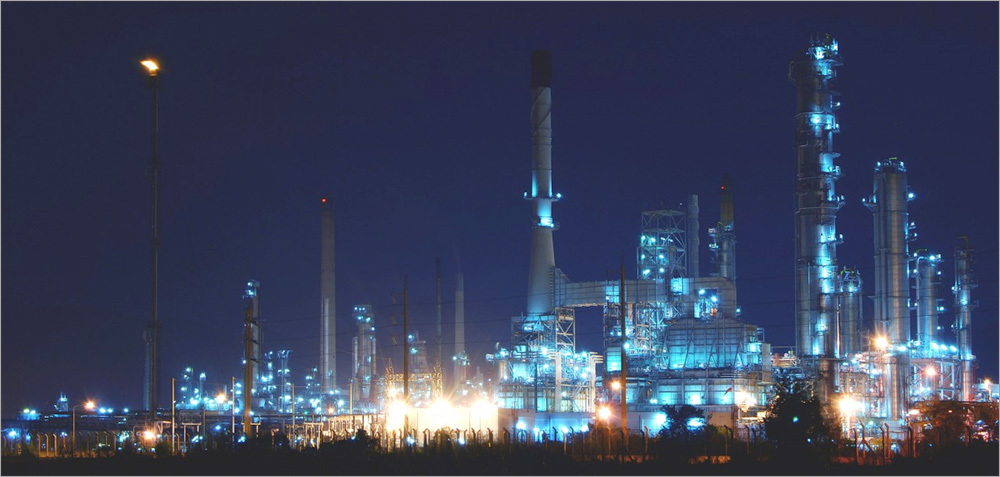
Perhaps the most difficult case. By factory, we mean large production areas - often city-forming enterprises (small and medium-sized plants can be attributed to the first two groups, but if with state participation, then only the fourth, unfortunately). For example, OAO “PO“ Sevmash ”in the city of Severodvinsk - there, around the enterprise, buses with delivery go, and it is necessary to print everywhere. And here is not laziness, but the production need to put at least one printer per 500 square meters. That recruited 500 devices throughout the plant.
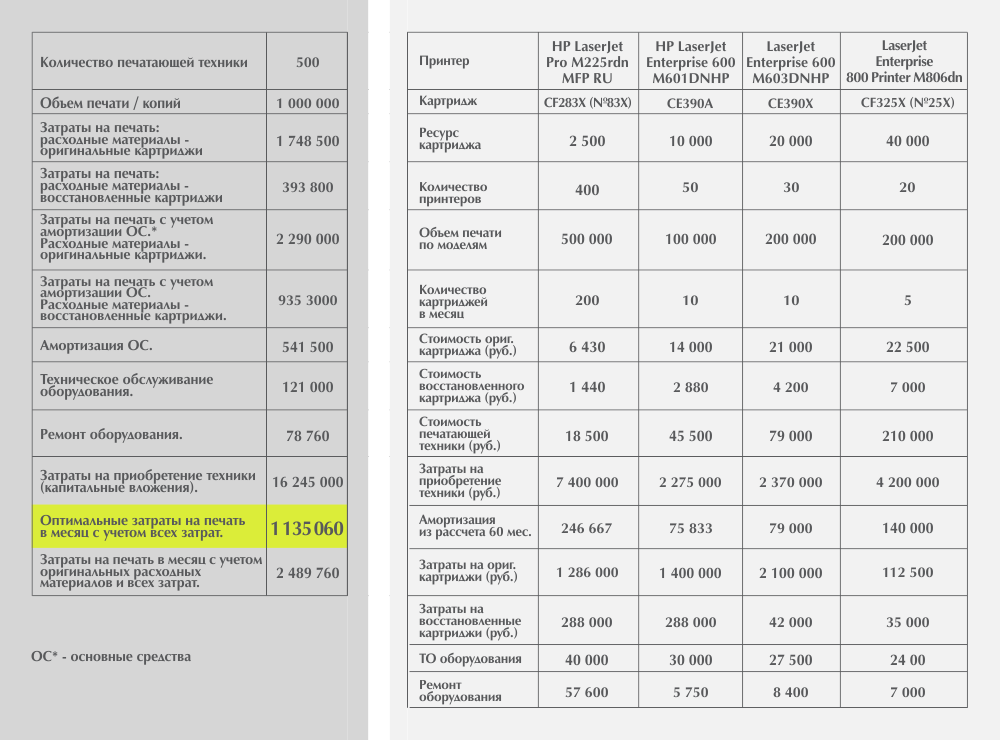
The main factor of choice here should be that the consumption of the printer does not exceed 1 cartridge type CF283X (No. 83X, resource ~ 2200 pages) in 2-4 months. Otherwise, it is better to change the printer to a more productive one, since considerable hidden costs are hidden in the delivery of the cartridge to the factory and maintenance. It is very difficult to optimize in such conditions, sometimes it’s easier to refuse to print :)
Consumables
It is necessary to dwell separately on consumables (without this in any way). As can be seen from the above examples, it is consumables that occupy the lion's share of the budget for printing documents, despite the fact that the initial costs are embedded in the printing technology itself.
In the case of using original cartridges, the proportion ranges from 70 to 90%. We want to immediately note that it is hardly possible to completely abandon the original cartridges, but it is quite realistic to reduce their volume by 5-10 times without loss of print quality. This approach allows you to reduce costs by 2-3 times, and taking into account the optimization of the entire print, the savings can be up to 80%. Of course, in ideal laboratory conditions, which can only be created in close cooperation between the customer and the performer. And only when on both sides there is a true desire to reduce the cost of printing in a particular organization.
A small bonus for those who are concerned about the topic of saving on printing, and for those who have read the publication to the end: "Print Optimizer" on our website, which will help calculate the potential savings for the printer model:

At least for the sake of interest, try to search for those printers that are used in your company, and consider the possible savings - most likely, you will be surprised.
Conclusion
So, the cost of printing one monochrome copy can be as much as 27 kopecks, and 2 rubles 48 kopecks, depending on the type of printing organization.
As you can see, optimizing the cost of printing in your organization is not so difficult as it seems at first glance - you just need to compare how many sheets per month you print on average in a given area and on which particular printer you do it, then use our modest advice and gradually start saving.
Source: https://habr.com/ru/post/254369/
All Articles